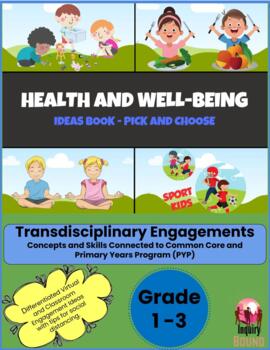Health and Well-Being Ideas Book for Inquiry-Based/Transdisciplinary Teaching
- PDF
Description
Here is a preview video about this product and how to use it:
https://www.youtube.com/watch?v=auF2y8pkXnY&feature=youtu.be
This product was created to help new and seasoned teachers as they plan for and develop learning engagements in inquiry-based classrooms. Our hope is that after looking through these ideas, you feel confident to use the ideas as they are, or your thoughts will be sparked for something like it that will work perfectly! The product is also meant for you to pick and choose activity engagements that are best for your students and classroom culture. We made sure to include tips for virtual learning, as well as distance learning in the classroom. The approach for delivering these learning engagements is based largely on the approaches you would find in an International Baccalaureate Primary Years Program classroom (IB PYP).
Here is a list of activity engagements you will find in this ideas book:
- Tuning-In Activities with Template Ideas
- Visible Thinking Routines with Template Ideas
- Social, Physical, Mental, and Personal Well-Being Activities that Connect to Parts of the Inquiry Cycle with Template Ideas
- Specialist Connections
- Math Connections with Template Ideas
- Suggested Literature
- Writing Connections with Template Ideas
- End of Unit Reflection Ideas and Templates



